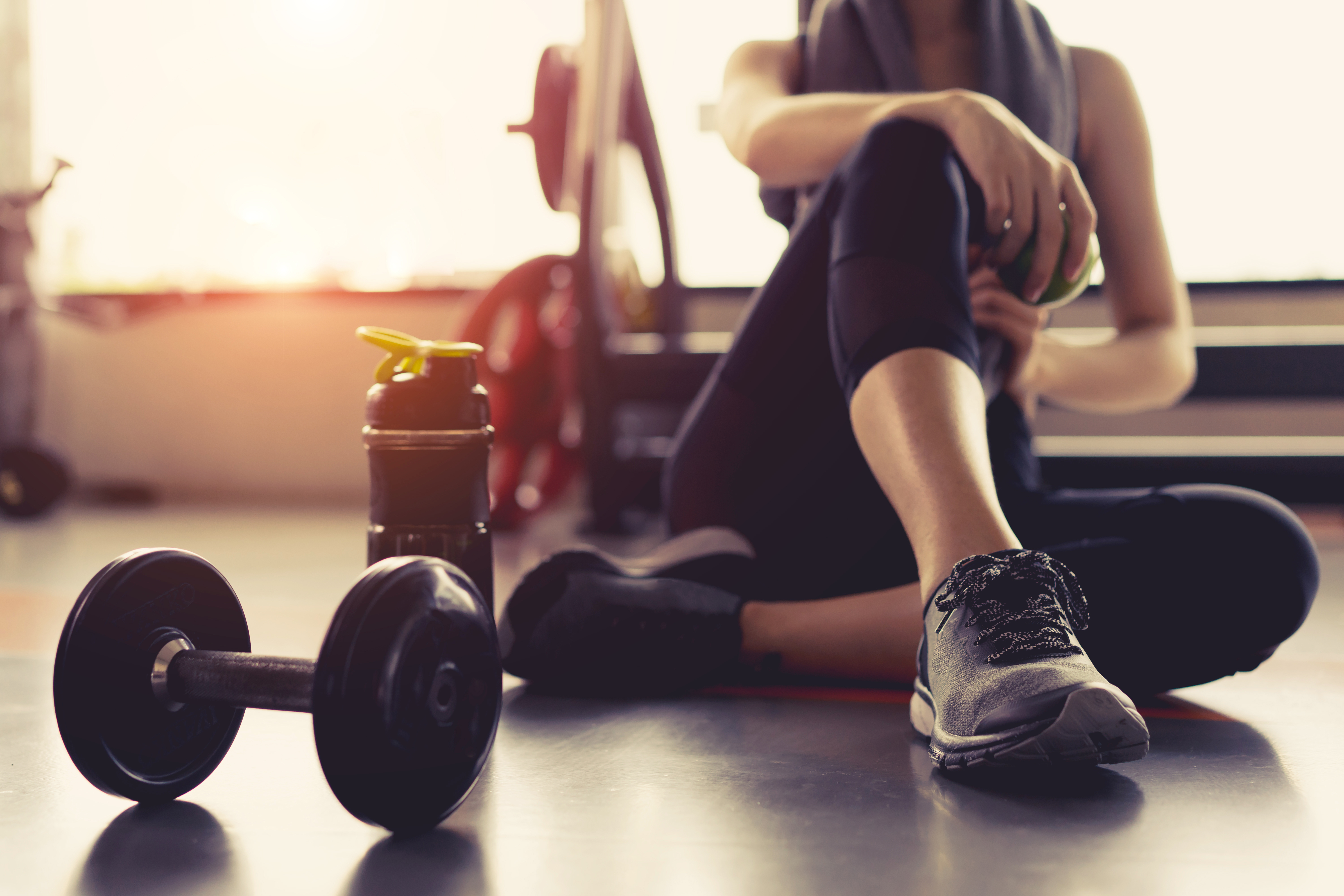 s### Introduction to Fitness
s### Introduction to Fitness

Fitness is a multifaceted concept that involves physical health, mental well-being, and the ability to perform daily tasks efficiently. It encompasses a wide range of activities aimed at improving strength, endurance, flexibility, and overall health. From lifting weights to participating in cardiovascular exercises, fitness covers a spectrum of activities, each offering specific benefits to the human body and mind.
This article will explore the significance of fitness in daily life, the components of physical fitness, the various types of exercise routines, and the impact of fitness on mental health. It will also provide an overview of the importance of a balanced approach to fitness, including nutrition, recovery, and motivation.
### 1. The Importance of Fitness
Fitness is not just about aesthetics; it plays a crucial role in maintaining good health. Regular exercise has been proven to reduce the risk of chronic diseases such as heart disease, diabetes, and obesity. It strengthens the cardiovascular system, boosts immune function, enhances flexibility, and supports mental health. Moreover, being physically fit can improve the quality of life by increasing energy levels, improving sleep quality, and enhancing overall mood.
Fitness also improves the body’s ability to perform everyday activities, from carrying groceries to playing sports or simply maintaining good posture throughout the day. It can help prevent injury by strengthening muscles, improving balance, and enhancing coordination.
In the long run, adopting a fitness-oriented lifestyle helps individuals live longer, healthier lives, reducing the likelihood of suffering from chronic health issues and improving mobility as one ages. The relationship between physical fitness and longevity is well-documented, with studies consistently showing that people who engage in regular physical activity have a higher life expectancy and better quality of life.
### 2. Components of Fitness
To achieve a well-rounded level of fitness, it is essential to focus on several key components. These components address different aspects of physical health and together contribute to overall wellness.
#### 2.1. Cardiovascular Endurance
Cardiovascular endurance, or aerobic fitness, refers to the ability of the heart, lungs, and circulatory system to supply oxygen to working muscles during sustained physical activity. Activities that improve cardiovascular endurance include running, swimming, cycling, and hiking.
Regular cardiovascular exercise increases heart rate and lung capacity, enhancing the body’s efficiency in oxygen utilization. It is particularly important for overall health, as it improves blood circulation, helps regulate blood pressure, and reduces the risk of heart disease.
#### 2.2. Muscular Strength
Muscular strength refers to the maximum amount of force a muscle or group of muscles can generate. Strength training exercises, such as weight lifting, resistance band exercises, and bodyweight exercises, are designed to build muscular strength.
Stronger muscles contribute to improved posture, support joints, and help with everyday tasks like lifting heavy objects or climbing stairs. In addition, muscular strength is key in preventing falls, especially in older adults, by improving balance and stability.
#### 2.3. Muscular Endurance
Muscular endurance is the ability of a muscle or group of muscles to sustain repeated contractions over an extended period. It is different from muscular strength in that it focuses on the muscle's ability to perform an activity for a longer duration rather than its maximal output.
Examples of activities that improve muscular endurance include long-distance running, cycling, and activities like planking or doing push-ups for extended periods. A high level of muscular endurance can help with stamina during physical tasks and is essential for athletes who require prolonged efforts, such as rowers or marathon runners.
#### 2.4. Flexibility
Flexibility refers to the range of motion available at a joint or group of joints. It is important for maintaining proper posture, preventing injuries, and allowing for fluid movement. Flexibility can be improved through stretching exercises, yoga, Pilates, and other activities that promote joint mobility.
Increased flexibility can help relieve muscle tension, reduce the risk of injury, and improve athletic performance. Moreover, it can make everyday activities, such as bending or reaching, feel easier and more comfortable.
#### 2.5. Body Composition
Body composition refers to the proportion of fat and lean mass in the body. A healthy body composition typically involves a lower percentage of body fat and a higher percentage of lean mass (muscles, bones, organs, etc.).
Body composition can be improved through a combination of diet, exercise, and lifestyle changes. Achieving and maintaining a healthy body composition not only helps improve physical appearance but also reduces the risk of diseases such as obesity, diabetes, and hypertension.
### 3. Types of Exercise for Fitness
Exercise can be classified into several categories, each serving a distinct purpose. A well-rounded fitness routine will incorporate elements from each of these categories to address all aspects of fitness.
#### 3.1. Aerobic Exercise
Aerobic exercise, or cardio, includes activities that elevate the heart rate and improve cardiovascular endurance. These exercises typically involve large muscle groups and are performed for an extended period of time.
Examples include:
- Running or jogging
- Swimming
- Cycling
- Walking
- Dancing
- Rowing
- Hiking
Aerobic exercise is essential for improving heart health, increasing stamina, and burning calories. It helps in weight management and is especially effective at reducing body fat.
#### 3.2. Strength Training
Strength training, or resistance training, focuses on building muscular strength and endurance. It involves lifting weights or using resistance bands to create muscle tension, which forces muscles to adapt and grow stronger over time.
Examples include:
- Weightlifting
- Bodyweight exercises (push-ups, squats, lunges)
- Resistance band exercises
- Kettlebell exercises
Strength training increases muscle mass, boosts metabolism, and supports bone health. It is vital for overall fitness, especially as one ages, as it helps preserve lean muscle mass and prevent the loss of bone density.
#### 3.3. Flexibility and Mobility Training
Flexibility and mobility exercises improve the range of motion in the joints and muscles. These exercises help maintain flexibility, prevent injuries, and enhance overall movement quality.
Examples include:
- Stretching
- Yoga
- Pilates
- Foam rolling
Incorporating flexibility and mobility exercises into a fitness routine is crucial for joint health and preventing muscle tightness. Activities like yoga and Pilates also contribute to mental well-being by promoting relaxation and mindfulness.
#### 3.4. High-Intensity Interval Training (HIIT)
HIIT is a form of exercise that alternates between short bursts of intense activity and low-intensity recovery periods. This training style can be applied to a variety of exercises, including running, cycling, and strength training.
The benefits of HIIT include:
- Increased cardiovascular fitness
- Improved metabolic rate
- Fat burning and muscle building
HIIT is a time-efficient way to improve fitness, as it delivers significant results in a shorter period compared to traditional exercise methods.
### 4. The Role of Nutrition in Fitness
Nutrition plays a pivotal role in supporting fitness goals. A well-balanced diet provides the necessary fuel for exercise, aids in muscle recovery, and supports overall health.
#### 4.1. Macronutrients
- **Proteins**: Essential for muscle growth and repair. Protein is particularly important after strength training sessions to repair muscle fibers and promote growth.
- **Carbohydrates**: The body’s primary energy source during exercise. Carbohydrates are stored as glycogen in muscles and the liver and are used during high-intensity workouts.
- **Fats**: Healthy fats, such as those from avocados, nuts, and fish, provide a source of sustained energy and are necessary for various bodily functions.
#### 4.2. Micronutrients
Vitamins and minerals are essential for maintaining overall health and supporting the body’s ability to perform and recover from exercise. Key micronutrients for fitness include:
- **Vitamin D**: Supports bone health and muscle function.
- **Calcium**: Necessary for bone density and muscle contraction.
- **Iron**: Helps in the production of hemoglobin, which carries oxygen to muscles.
#### 4.3. Hydration
Proper hydration is critical for optimal physical performance. Dehydration can lead to fatigue, cramps, and decreased endurance. It's important to drink water before, during, and after exercise to stay hydrated and support metabolic processes.
#### 4.4. Timing
The timing of meals and snacks can also impact fitness performance. Consuming a balanced meal with protein, carbohydrates, and fats 2-3 hours before exercise can provide the energy needed for an intense workout. After exercise, a protein-rich snack or meal helps with muscle recovery.
### 5. The Importance of Recovery
Recovery is an often-overlooked aspect of fitness, but it is just as important as exercise itself. During intense physical activity, muscles experience small tears, which require time to repair. Without adequate recovery, overtraining can lead to injury and burnout.
Key components of recovery include:
- **Rest**: Adequate sleep and rest days are essential for muscle recovery and avoiding overtraining syndrome.
- **Active Recovery**: Low-intensity activities like walking or gentle stretching can help reduce muscle soreness and improve circulation.
- **Massage or Foam Rolling**: These techniques can relieve muscle tightness, improve flexibility, and reduce recovery time.
### 6. Motivation and Consistency
Achieving fitness goals requires more than just physical effort; it also requires mental discipline, motivation, and consistency. Setting clear, realistic goals is an important first step in maintaining motivation. Tracking progress, whether through fitness apps or a journal, can provide a sense of accomplishment and help identify areas for improvement.
Finding a form of exercise that is enjoyable is key to sustaining long-term fitness. Whether it's running, dancing, or weightlifting, choosing activities that bring joy can make it easier to stick with a fitness routine.
### Conclusion
Fitness is an ongoing journey that involves much more than just exercise. It requires a balanced approach that incorporates physical activity, proper nutrition, recovery, and mental well-being. By focusing on the various components of fitness, individuals can improve their health, increase their energy
### Introduction to Fitness
Fitness is a multifaceted concept that involves physical health, mental well-being, and the ability to perform daily tasks efficiently. It encompasses a wide range of activities aimed at improving strength, endurance, flexibility, and overall health. From lifting weights to participating in cardiovascular exercises, fitness covers a spectrum of activities, each offering specific benefits to the human body and mind.
This article will explore the significance of fitness in daily life, the components of physical fitness, the various types of exercise routines, and the impact of fitness on mental health. It will also provide an overview of the importance of a balanced approach to fitness, including nutrition, recovery, and motivation.
### 1. The Importance of Fitness
Fitness is not just about aesthetics; it plays a crucial role in maintaining good health. Regular exercise has been proven to reduce the risk of chronic diseases such as heart disease, diabetes, and obesity. It strengthens the cardiovascular system, boosts immune function, enhances flexibility, and supports mental health. Moreover, being physically fit can improve the quality of life by increasing energy levels, improving sleep quality, and enhancing overall mood.
Fitness also improves the body’s ability to perform everyday activities, from carrying groceries to playing sports or simply maintaining good posture throughout the day. It can help prevent injury by strengthening muscles, improving balance, and enhancing coordination.
In the long run, adopting a fitness-oriented lifestyle helps individuals live longer, healthier lives, reducing the likelihood of suffering from chronic health issues and improving mobility as one ages. The relationship between physical fitness and longevity is well-documented, with studies consistently showing that people who engage in regular physical activity have a higher life expectancy and better quality of life.
### 2. Components of Fitness
To achieve a well-rounded level of fitness, it is essential to focus on several key components. These components address different aspects of physical health and together contribute to overall wellness.
#### 2.1. Cardiovascular Endurance
Cardiovascular endurance, or aerobic fitness, refers to the ability of the heart, lungs, and circulatory system to supply oxygen to working muscles during sustained physical activity. Activities that improve cardiovascular endurance include running, swimming, cycling, and hiking.
Regular cardiovascular exercise increases heart rate and lung capacity, enhancing the body’s efficiency in oxygen utilization. It is particularly important for overall health, as it improves blood circulation, helps regulate blood pressure, and reduces the risk of heart disease.
#### 2.2. Muscular Strength
Muscular strength refers to the maximum amount of force a muscle or group of muscles can generate. Strength training exercises, such as weight lifting, resistance band exercises, and bodyweight exercises, are designed to build muscular strength.
Stronger muscles contribute to improved posture, support joints, and help with everyday tasks like lifting heavy objects or climbing stairs. In addition, muscular strength is key in preventing falls, especially in older adults, by improving balance and stability.
#### 2.3. Muscular Endurance
Muscular endurance is the ability of a muscle or group of muscles to sustain repeated contractions over an extended period. It is different from muscular strength in that it focuses on the muscle's ability to perform an activity for a longer duration rather than its maximal output.
Examples of activities that improve muscular endurance include long-distance running, cycling, and activities like planking or doing push-ups for extended periods. A high level of muscular endurance can help with stamina during physical tasks and is essential for athletes who require prolonged efforts, such as rowers or marathon runners.
#### 2.4. Flexibility
Flexibility refers to the range of motion available at a joint or group of joints. It is important for maintaining proper posture, preventing injuries, and allowing for fluid movement. Flexibility can be improved through stretching exercises, yoga, Pilates, and other activities that promote joint mobility.
Increased flexibility can help relieve muscle tension, reduce the risk of injury, and improve athletic performance. Moreover, it can make everyday activities, such as bending or reaching, feel easier and more comfortable.
#### 2.5. Body Composition
Body composition refers to the proportion of fat and lean mass in the body. A healthy body composition typically involves a lower percentage of body fat and a higher percentage of lean mass (muscles, bones, organs, etc.).
Body composition can be improved through a combination of diet, exercise, and lifestyle changes. Achieving and maintaining a healthy body composition not only helps improve physical appearance but also reduces the risk of diseases such as obesity, diabetes, and hypertension.
### 3. Types of Exercise for Fitness
Exercise can be classified into several categories, each serving a distinct purpose. A well-rounded fitness routine will incorporate elements from each of these categories to address all aspects of fitness.
#### 3.1. Aerobic Exercise
Aerobic exercise, or cardio, includes activities that elevate the heart rate and improve cardiovascular endurance. These exercises typically involve large muscle groups and are performed for an extended period of time.
Examples include:
- Running or jogging
- Swimming
- Cycling
- Walking
- Dancing
- Rowing
- Hiking
Aerobic exercise is essential for improving heart health, increasing stamina, and burning calories. It helps in weight management and is especially effective at reducing body fat.
#### 3.2. Strength Training
Strength training, or resistance training, focuses on building muscular strength and endurance. It involves lifting weights or using resistance bands to create muscle tension, which forces muscles to adapt and grow stronger over time.
Examples include:
- Weightlifting
- Bodyweight exercises (push-ups, squats, lunges)
- Resistance band exercises
- Kettlebell exercises
Strength training increases muscle mass, boosts metabolism, and supports bone health. It is vital for overall fitness, especially as one ages, as it helps preserve lean muscle mass and prevent the loss of bone density.
#### 3.3. Flexibility and Mobility Training
Flexibility and mobility exercises improve the range of motion in the joints and muscles. These exercises help maintain flexibility, prevent injuries, and enhance overall movement quality.
Examples include:
- Stretching
- Yoga
- Pilates
Foam rolling
Incorporating flexibility and mobility exercises into a fitness routine is crucial for joint health and preventing muscle tightness. Activities like yoga and Pilates also contribute to mental well-being by promoting relaxation and mindfulness.
#### 3.4. High-Intensity Interval Training (HIIT)
HIIT is a form of exercise that alternates between short bursts of intense activity and low-intensity recovery periods. This training style can be applied to a variety of exercises, including running, cycling, and strength training.
The benefits of HIIT include:
- Increased cardiovascular fitness
Improved metabolic rate
- Fat burning and muscle building
HIIT is a time-efficient way to improve fitness, as it delivers significant results in a shorter period compared to traditional exercise methods.
### 4. The Role of Nutrition in Fitness
Nutrition plays a pivotal role in supporting fitness goals. A well-balanced diet provides the necessary fuel for exercise, aids in muscle recovery, and supports overall health.
#### 4.1. Macronutrients
**Proteins**: Essential for muscle growth and repair. Protein is particularly important after strength training sessions to repair muscle fibers and promote growth.
- **Carbohydrates**: The body’s primary energy source during exercise. Carbohydrates are stored as glycogen in muscles and the liver and are used during high-intensity workouts.
- **Fats**: Healthy fats, such as those from avocados, nuts, and fish, provide a source of sustained energy and are necessary for various bodily functions.
#### 4.2. Micronutrients
Vitamins and minerals are essential for maintaining overall health and supporting the body’s ability to perform and recover from exercise. Key micronutrients for fitness include:
- **Vitamin D**: Supports bone health and muscle function.
- **Calcium**: Necessary for bone density and muscle contraction.
**Iron**: Helps in the production of hemoglobin, which carries oxygen to muscles.
#### 4.3. Hydration
Proper hydration is critical for optimal physical performance. Dehydration can lead to fatigue, cramps, and decreased endurance. It's important to drink water before, during, and after exercise to stay hydrated and support metabolic processes.
#### 4.4. Timing
The timing of meals and snacks can also impact fitness performance. Consuming a balanced meal with protein, carbohydrates, and fats 2-3 hours before exercise can provide the energy needed for an intense workout. After exercise, a protein-rich snack or meal helps with muscle recovery.
### 5. The Importance of Recovery
Recovery is an often-overlooked aspect of fitness, but it is just as important as exercise itself. During intense physical activity, muscles experience small tears, which require time to repair. Without adequate recovery, overtraining can lead to injury and burnout.
Key components of recovery include:
- **Rest**: Adequate sleep and rest days are essential for muscle recovery and avoiding overtraining syndrome.
- **Active Recovery**: Low-intensity activities like walking or gentle stretching can help reduce muscle soreness and improve circulation.
**Massage or Foam Rolling**: These techniques can relieve muscle tightness, improve flexibility, and reduce recovery time.
### 6. Motivation and Consistency
Achieving fitness goals requires more than just physical effort; it also requires mental discipline, motivation, and consistency. Setting clear, realistic goals is an important first step in maintaining motivation. Tracking progress, whether through fitness apps or a journal, can provide a sense of accomplishment and help identify areas for improvement.
Finding a form of exercise that is enjoyable is key to sustaining long-term fitness. Whether it's running, dancing, or weightlifting, choosing activities that bring joy can make it easier to stick with a fitness routine.
### Conclusion
Fitness is an ongoing journey that involves much more than just exercise. It requires a balanced approach that incorporates physical activity, proper nutrition, recovery, and mental well-being. By focusing on the various components of fitness, individuals can improve their health, increase their energy


